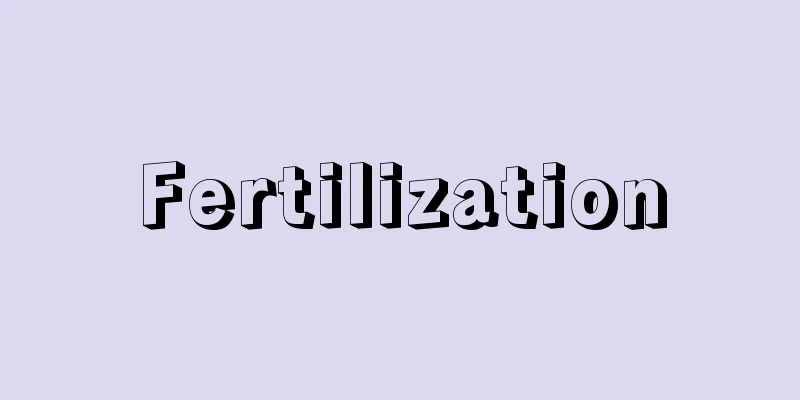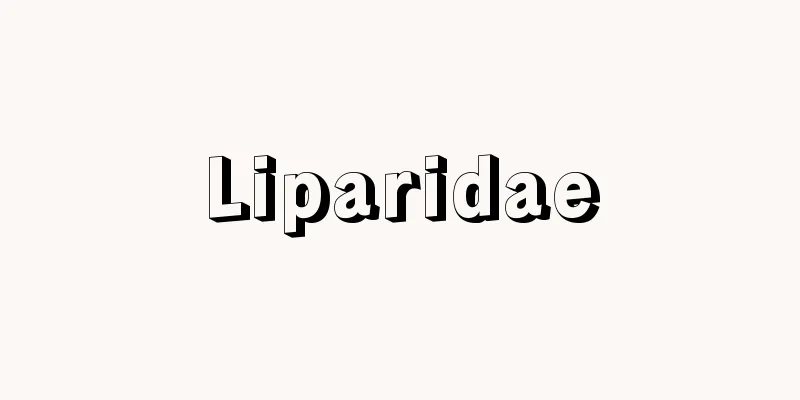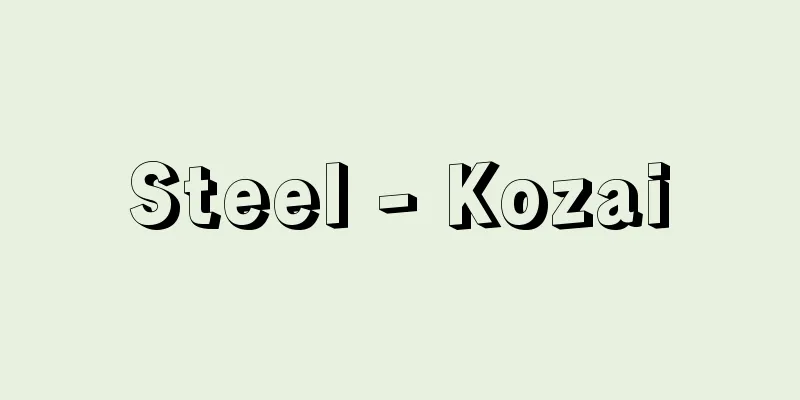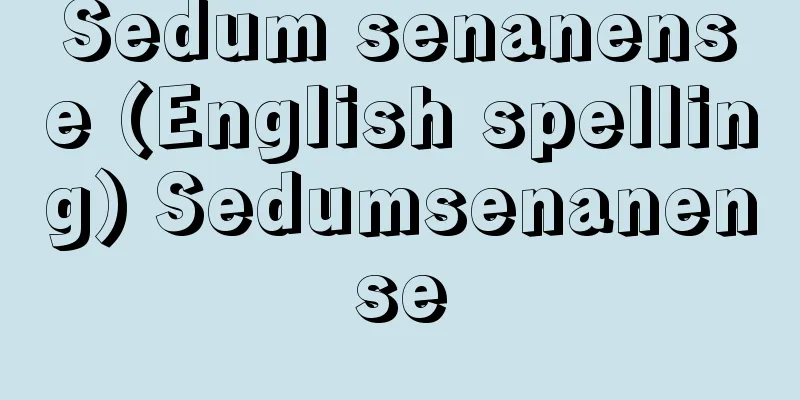Fertilization

|
It is the fusion of a female gamete (egg) and a male gamete (sperm). When gametes are formed, meiosis occurs, and the karyophase is haploid (n), but fertilization returns the karyophase to 2n. The biological significance of fertilization is, first, that the egg is stimulated to start development, and, second, that chromosome recombination occurs, changing the genetic makeup and preventing the aging of the species. [Kinoshita Seiichiro] The process of fertilizationFertilization follows a series of steps as follows. First, the sperm move actively and approach the egg. In ferns, the sperm are attracted to the egg by chemotaxis, but this is not the case in animals, and the encounter is purely accidental. There was a time when it was thought that certain universal substances were involved in the encounter and subsequent fusion of the egg and sperm, and these substances were collectively called fertilitins. However, some of these substances have since become uncertain or less universal, and the term is now rarely used. However, there are cases in which the jelly layer (mainly composed of glycoproteins) surrounding the egg is essential for fertilization, or enhances the respiration of sperm, or where the sperm head releases hyaluronidase, which breaks down hyaluronic acid, thereby breaking down the intercellular substance connecting the follicular cells surrounding the egg and helping the sperm reach the egg. These substances, together with the substances that induce sperm chemotaxis mentioned above, are sometimes called fertilization substances. In many cases, the acrosome reaction occurs at the tip of the sperm head that approaches the egg. After this reaction, the sperm passes through the protective layer of the egg and reaches the egg surface, where the sperm and egg cell membranes fuse. At this time, the egg cell membrane may deform and protrude. This is called the fertilization protrusion. As a result of fusion, the nuclei of the egg and sperm become enveloped in a common cell membrane. The outer side of the egg cell membrane is covered with an unstructured membrane called the vitelline membrane, but at the time of fertilization, this vitelline membrane peels off and hardens with the addition of substances secreted from the egg, forming the fertilization membrane that surrounds the egg. A gap called the perivitelline space forms between the fertilization membrane and the egg. In addition to protecting the egg, the fertilization membrane also acts as a mechanical barrier to prevent excess sperm from entering the egg and causing polyspermy. However, there are many animals in which the formation of the fertilization membrane is not very noticeable. After the embryo develops, it breaks through the fertilization membrane or vitelline membrane and emerges, which is called hatching. Eventually, the egg nucleus and sperm nucleus, wrapped in a common cell membrane, approach and become one. The process from the union of the egg cell and sperm to the union of the egg nucleus and sperm nucleus is called fertilization. Following this, an aster develops around the centrosome brought in by the sperm, which becomes the division apparatus and mitosis begins. This is the first cleavage. [Kinoshita Seiichiro] Conditions for fertilizationFertilization requires the fusion of the sperm and egg cell membranes, and fertilization does not occur even if sperm are inserted into an egg cell through micromanipulation. The key to fertilization is the acrosome reaction of the sperm and the corresponding reaction of the cell membrane on the surface of the egg. The state of the egg that is suitable for fertilization also differs depending on the species of animal. During the egg maturation process, oocytes that have not yet begun meiosis can accept sperm include lugworms and arrow worms. Lugworms and mussels are capable of fertilization at the middle of the first maturation division, most vertebrates at the middle of the second maturation division, and sea urchins and other animals are capable of fertilization after the end of maturation division. If a sperm nucleus enters the egg during maturation division, it will wait in the egg cytoplasm until maturation division resumes and is completed, and then it will combine with the egg nucleus. [Kinoshita Seiichiro] Mode of fertilizationFertilization in animals can be external or internal. In many animals that live in water, fertilization occurs in the water through egg-laying and sperm-release. In these cases, egg-laying and sperm-release occur at roughly the same time, and individuals are seen to come close to each other to release eggs and sperm. Even animals that live on land sometimes return to the water to lay eggs. In animals that only live on land, sperm enter the female's body through a method called mating. This is thought to be one adaptation to life on land. Thus, fertilization in animals essentially has to occur in water, but depending on the animal, there are various stages, ranging from simple egg-laying and sperm release to mating. In either case, the placement of sperm and eggs in a common medium is called insemination or assisted insemination. Artificial insemination is called artificial insemination. In the fields of animal husbandry and fisheries, the term artificial insemination is sometimes used out of custom. In the fertilization of seed plants, after pollination, the pollen grows a pollen tube, in which nuclear division occurs to produce a pollen tube nucleus and a generative nucleus. The generative nucleus further divides to produce two sperm nuclei, which then combine with the egg nucleus and the polar nucleus, respectively, when the pollen tube reaches the embryo sac. This phenomenon is called double fertilization. Even in hermaphroditic animals such as snails and earthworms, fertilization usually occurs between different individuals. In rare cases, such as in sea squirts, fertilization occurs between eggs and sperm produced in the same individual, but this is called self-fertilization. In plants, pollen from the same individual can attach to the pistil, and this is called self-pollination. [Kinoshita Seiichiro] "Masao Sugiyama, Fertilization (1978, University of Tokyo Press)" ▽ "The Zoological Society of Japan, Issues in Modern Zoology 4: Eggs and Sperm (1975, Society Publishing Center)" [Reference] |Source: Shogakukan Encyclopedia Nipponica About Encyclopedia Nipponica Information | Legend |
|
雌性配偶子(卵)と雄性配偶子(精子)の融合をいう。配偶子が形成される際には減数分裂が行われ、核相は半数(n)を示すが、受精によって全数(2n)に戻る。受精の生物学的な意味は、第一に卵が刺激を受けて発生を開始すること、第二に染色体の組換えが行われ、遺伝子構成が改まって種の老化を防ぐことである。 [木下清一郎] 受精の過程受精は次のような一連の過程を経る。まず精子が活発に運動して卵に接近する。シダ植物などでは走化性によって精子は卵に引き寄せられるが、動物では普通このようなことはなく、出合いはまったく偶然である。かつて、卵と精子の出合いやそのあとの合体に、ある普遍性をもつ物質が介在すると考えられた時期があり、この物質を総称して受精素(ファーティリチン)とよんだが、その後、そのうちのあるものは不確実となったり、普遍性に乏しかったりして、現在ではこのことばはほとんど使われなくなった。しかし、卵の周囲にあるゼリー層(糖タンパク質が主成分)が受精に必須(ひっす)であったり、精子の呼吸を高めたりする例や、精子の頭部からヒアルロン酸を分解するヒアルロニダーゼが出され、これによって卵の周囲にある濾胞(ろほう)細胞をつないでいる細胞間物質を分解して、精子が卵細胞に到達するのを助ける例などがある。これらの物質を、前述の精子の走化性を引き起こす物質などといっしょにして、受精物質とよぶこともある。 卵に接近した精子の頭部先端では先体反応がおこる例が多く、この反応後、精子は卵の保護層を通過して卵表面に至り、精子と卵の細胞膜は癒合する。このとき卵の細胞膜が変形をおこし突出することがある。これを受精突起とよぶ。癒合によって卵と精子の核は共通の細胞膜に包まれた状態になる。卵の細胞膜のさらに外側は卵黄膜とよばれる無構造の膜で覆われているが、受精時にこの卵黄膜がはがれて卵から分泌される物質も加わって硬くなり、卵を包む受精膜となることがある。受精膜と卵の間には囲卵腔(こう)とよばれるすきまができる。受精膜は卵を保護するほか、精子が余分に卵内に入って多精とならないように機械的障壁の役もする。しかし、受精膜の形成があまり顕著でない動物も多い。なお、胚(はい)が発生したのち、受精膜または卵黄膜を破って出てくることを孵化(ふか)とよぶ。 やがて、共通の細胞膜に包まれた卵核と精核とは接近して一つになる。卵細胞と精子との合体から卵核と精核の合体までの過程を受精という。これに続いて精子によって持ち込まれた中心体の周囲には星状体が発達し、これが分裂装置となって、有糸分裂が始まる。これが第一卵割である。 [木下清一郎] 受精の条件受精には精子と卵の細胞膜が癒合することが必須の条件であって、精子を顕微操作で卵細胞の中に入れても受精はおこらない。精子の先体反応とそれに対する卵表面の細胞膜の反応が受精の鍵(かぎ)となっている。 また、受精が可能な卵の状態は動物の種類によって異なっている。卵の成熟の過程のうち、まだ減数分裂の開始する前の卵母細胞で精子を受け入れるものとしては、ゴカイ、ヤムシなどがあげられる。第一成熟分裂の中期ではツバサゴカイ、イガイなどが受精可能となり、第二成熟分裂の中期では大部分の脊椎(せきつい)動物が、成熟分裂終了後ではウニなどが受精可能となる。成熟分裂の途中で卵内に精子核が入った場合には、成熟分裂の進行が再開して完了するまで、精核は卵細胞質中で待っており、その後、卵核と合体する。 [木下清一郎] 受精の様式動物の受精には体外受精と体内受精とがある。水中にすむ動物の多くでは、放卵・放精を行って水中で受精が行われる。その際、放卵・放精がほぼ同じ時期におこり、しかも個体どうしが接近して放卵・放精をする行動がみられる。陸上生活をする動物でも、産卵のときには水中に戻る例がある。陸上生活のみを行っている動物では交尾という手段で精子が雌の体内に入る。これは陸上生活に対する適応の一つと考えられる。 このように、動物の受精は本質的に水中でなくてはおこりえないが、動物によって、単なる放卵・放精を行うものから、交尾を行うものまで種々の段階があるといえる。いずれの場合にも、精子と卵とが共通の媒質中に置かれることを媒精または助精という。また、人工的に媒精を行うことを人工受精とよぶ。なお、畜産学や水産学の分野では、習慣上、人工授精の語が使われることがある。 種子植物の受精では、受粉に続いて花粉が花粉管を伸ばし、その中で核の分裂がおこって花粉管核と生殖核とができる。生殖核はさらに分裂して2個の精核となり、花粉管が胚嚢(はいのう)に達すると、これらはそれぞれ卵核および極核と合体する。この現象を重複受精(ちょうふくじゅせい)という。 マイマイやミミズのような雌雄同体の動物でも、受精は別の個体間で行われるのが普通である。ホヤなどのように、同一個体に生じた卵と精子とが受精する例もまれにあるが、このような場合を自家受精という。植物で同一個体の花粉がその雌しべにつくことがあり、これを自家受粉という。 [木下清一郎] 『椙山正雄著『受精』(1978・東京大学出版会)』▽『日本動物学会編『現代動物学の課題4 卵と精子』(1975・学会出版センター)』 [参照項目] |出典 小学館 日本大百科全書(ニッポニカ)日本大百科全書(ニッポニカ)について 情報 | 凡例 |
Recommend
Black book/Blue book
A type of early kusazoshi published in Edo. It app...
Najib (English spelling)
In 1952, the Cairo Arson Incident occurred during...
Nava Vidhāna (English spelling)
…As his inclination towards Christianity grew str...
Neanthes virens - Neanthes virens
It is an annelid of the Polychaeta family Nereidae...
Maine de Biran (English spelling)
1766‐1824 French philosopher, born Marie François ...
Vinylon - Biniron (English spelling) vinylon
A general name given to synthetic fibers made fro...
Light water reactor - Keisuiro
Light water moderated and cooled nuclear reactors...
Symbol vehicle - Symbol vehicle
…In face-to-face group conversations and concerts...
automatic train operation device
…Abbreviation for automatic train operation devic...
Q blood type
…He served as professor at Kanazawa Medical Colle...
Angelica acutiloba (Sieb.et Zucc.) Kitagawa
A perennial plant of the Apiaceae family that grow...
Yale Zone Catalogue (English)
…During that time, the number of stars for which ...
Twisted thread - Twisted thread
…A thread made by twisting two or more threads of...
Sanno Shinto - Sanno Shinto
Sanno refers to Hiyoshi Taisha Shrine in Omi. The ...
Ishan Albahuriyat - Ishan Albahuriyat
…the capital of the Isin 1st Dynasty (2017-1794 B...









